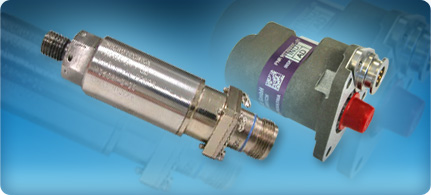


Pressure Switches
- membrane, piston or bellows
- up to 525 bars (7600 psi)
- Integrated electronics for signal processing and complex functions available
- Provide very precise, accurate set points
- Vibration tests pass easily with our unique and robust designs
- Catalog valves can usually be adapted easily to meet special requirements
Two Ranges of Pressure Switches
Relative Pressure Switches
- Provide the relative pressure between two points.
- If both operating pressures are the same, the measuring element cannot move and no pressure will be indicated.
- Indicated when one pressure is higher or lower.
Absolute Pressure Switches
- Operate at the same settings above zero pressure despite atmospheric pressure changes
- Where pressures are measured independently of the natural fluctuations in atmospheric pressure. The pressure of the media to be measured is compared against a reference pressure of absolute zero (absolute vacuum) in a sealed reference chamber.
Three Primary Sensor Technologies
Bellow Pressure Switches: Simple and Light
- Uses axial deformation of a metallic bellow under the effect of pressure
- Use controlled by limits of bellows and vibration effects
- Use only for low and medium pressures
Diaphragm Pressure Switches: Strength and Accuracy
- Legacy-proven pressure switch
- Diaphragm deforms under pressure and transmits the movement to a micro-switch via piston
- Deformation must remain small (0.1 to 0.2 mm) to stay within the elastic envelope of the diaphragm; movement must be amplified
- Strength comes from diaphragm movement being limited by stationary switch, enabling it to withstand higher pressures
Piston Pressure Switches: A Simple Solution for High Pressures
- Includes piston with dynamic seals that moves under pressure
- Withstands very high pressures
- Performance limited by hysteresis created by the friction of piston seals; mainly at low temperatures
Download and complete the Pressure Switch form to send us your specifications